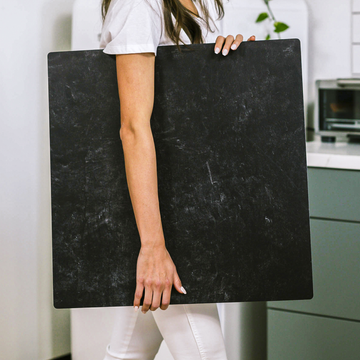As a product photographer with over a decade of experience, I've learned that the secret to mouth-watering food photos isn't just about the food - it's about understanding the invisible forces at play between your subject and its backdrop. Today, I'm pulling back the curtain on some fascinating technical aspects that will transform your food photography game.
The Magic Beneath the Surface
Think of your backdrop as more than just a pretty surface. It's actually a complex player in the physics of light and visual psychology. When I first started shooting professionally, I was amazed to discover how the microscopic texture of a backdrop - texture you can't even see with the naked eye - could dramatically impact how light dances around a glistening chocolate ganache or a dewy glass of wine.
Here's something most photographers never consider: your backdrop is constantly changing throughout your shoot. Yes, you read that right! The material actually responds to room temperature, subtly shifting its color properties as it warms up or cools down. I learned this lesson the hard way during a commercial ice cream shoot when my perfectly white backdrop took on a slightly different tone mid-session.
The Psychology of Texture: Why Some Photos Make You Hungrier Than Others
Have you ever wondered why some food photos stop you mid-scroll while others barely register? The secret often lies in the backdrop's texture depth. Through years of testing and countless shoots, I've discovered that:
- Shallow textures work like fast food for the brain - perfect for Instagram where quick impact matters
- Deeper textures are like a fine dining experience - they keep viewers engaged longer
- Mixed textures serve as visual guides, directing attention exactly where it needs to go
Pro Tip: Next time you're shooting, try creating what I call a "transition zone" - a 3-6 inch area where your food and backdrop textures subtly interact. It's like creating a visual melody that makes your photos sing.
The Tech Revolution in Your Studio
The world of food photography backdrops has gone high-tech, and it's absolutely fascinating. We're now working with materials that sound more at home in a NASA lab than a photo studio. Multi-layer composites, nano-coatings, and temperature-stable polymers are changing the game. These aren't just fancy terms - they're tools that help us create more consistent, beautiful images.
My Proven Workflow
- The Gradient Test: Before any major shoot, conduct a simple light gradient test on your backdrop
- Temperature Mapping: Keep notes on color shifts for different materials at various temperatures
- Texture Library: Build a database of texture-food combinations that work consistently well
Bringing It All Together
The most beautiful food photos happen when technical expertise meets creative intuition. Understanding the science behind your backdrop choices doesn't make your photos less artistic - it gives you more tools to express your creative vision.
Remember: Your backdrop isn't just supporting your food; it's actively participating in telling its story. Whether you're shooting for a major restaurant chain or your personal food blog, these technical insights will help you create images that don't just show food - they make people feel it.
What's Next?
Stay curious about the technical side of food photography. The field is constantly evolving, and there's always something new to learn. In my next post, I'll dive into advanced lighting techniques that complement these backdrop principles.
Have you noticed how different backdrops affect your food photography? Share your experiences in the comments below - I'd love to hear about your discoveries!


